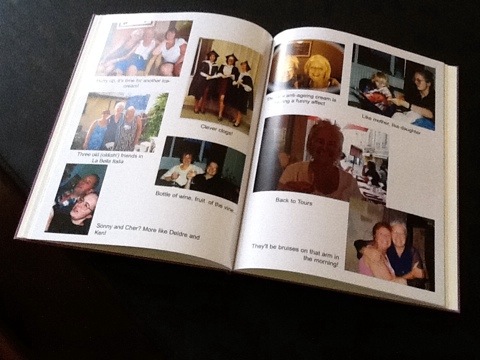Blogging is really good for any would-be writers. I don’t do it to be read as I imagine everything goes into a large cyber vacuum. I don’t really mind if nobody reads and I forget to check the stats until a young friend reminds me. I blog for myself. It’s an extension of journaling,something I’ve done for as long as I can remember. I have notebooks and diaries stashed all over the house. I don’t subscribe to daily event recording, just interesting thoughts, quotes and observations. In my 20s, 30s, 40s my diaries were filled with ‘woe me’ stuff. About the trials of bringing up children, juggling priorities and running a business in a competitive world. If anyone ever reads them after I’ve gone they’ll say ‘Oh she didn’t seem like a depressive, did she?’ I found that once I’d reflected on something it often dissolved in importance. And it’s very therapeutic to reread what you wrote later. You realise that most of the things you were anxious about were not important, or at least not now. I used to record conversations with my husband that went nowhere and frustrated me. I’d write them in French so he couldn’t find them and read them. Again I smile when I imagine people might say ‘Oh they always seemed such a happy couple…’ So you can’t trust memoirs. But I’d still like to have a go…

The great Brian Sewell and his horse
I’d like to be a cross between Alan Bennett and Diana Athill, with a bit of Nigel Slater, Brian Sewell and Nora Ephron thrown in. Writing with humour is for me the essential ingredient. I once went on a memoir writing course during which humour was sadly lacking. I was well out of my comfort zone, despite attending with a friend. The course was run by a criminal. A guy who looked, sounded and had been a Guardian journalist, not at all what I was expecting. Anything but ‘well ‘ard’. No tattoos nor scars. I hadn’t read his stuff before I went along. Fortunately. Else I might not have bothered. It didn’t matter anyway cos he read extracts aloud. It was all classic mis-lit stuff: abuse, neglect, stabbings, prostitution, knifings… And it set the tone for the group. We were a strange mix of ages and types. From the young lad who wanted to write and earn millions to retired folk who just believed they had a story to tell. The process was input from the tutor, followed by a period of writing, sharing what we had written and then feedback. The last part didn’t work because the tutor didn’t set it up properly and people weren’t honest. Which made it less than useful. I wasn’t there for ego massage.
From the outset I realised that everyone was competing in the misery stakes. Adultery, abortion, abuse … were the common themes. All read aloud with the upmost seriousness. Sometimes tears and arms round shoulders. Like a therapy group. Maybe that’s the sort of people who are attracted to this kind of thing. I wanted to laugh. Except during my friend’s readings as I was enthralled hearing stuff I didn’t know, and she is a gifted writer. The rest I got tired of. Submerged in a tide of desperation and unhappiness. What’s more we were in the glorious Devon countryside that seemed devoid of colour. The tutor didn’t know how to cope so he just let it roll on.
I couldn’t compete it in the misery stakes so I decided to write about funny ordinary things – like my family. My Dad, who looked like the Pope but shared a birthday with Saddam Hussein – with whom he had more in common. And my beautiful raven-haired mother who tried, vainly, to improve the appearance of her dowdy teenage daughter with red lipstick and high heels. (It needed more than that!) Look, now, all these years on, bare lips and flat shoes!
So blogging is a preparation for memoir writing – but my way (as Frank would say!)










![WOYH[1]](https://catherinemarybrady.files.wordpress.com/2011/06/woyh1.jpg?w=584)